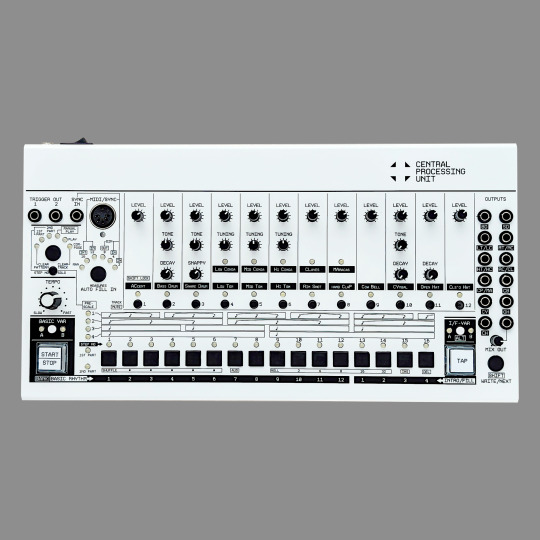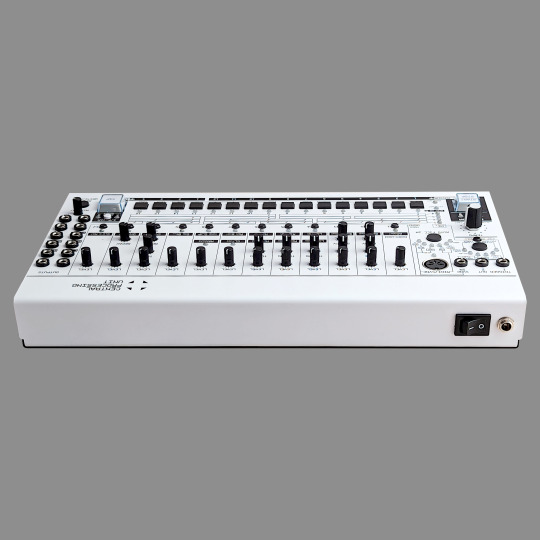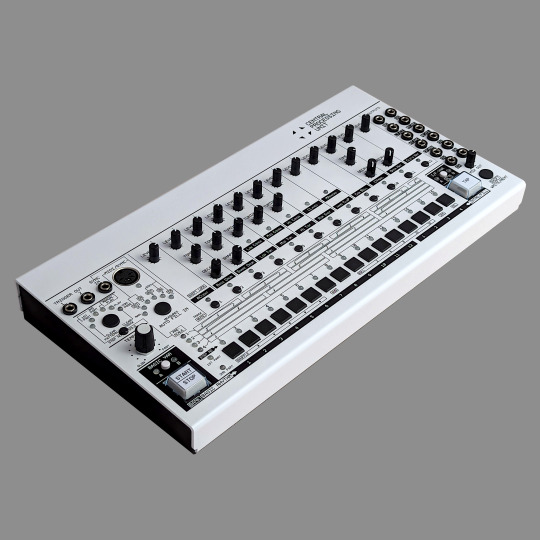#central processing unit
Explore tagged Tumblr posts
Audio
Central Processing Unit’s CPU128 Classics
#central processing unit#cpu128 classics#music#electro#techno#idm#electronic#electronica#detroit techno#acid techno#bleep techno#ambient techno#synth funk#dance#bandcamp
4 notes
·
View notes
Text

CPU Records
7 notes
·
View notes
Note
azuretime knifeplay. inappropriate usage of eye socket dussekar. chance findom. also, trans male chance.
- Central Processing Unit
oh hell yeah. hell yeah to all of that actually.
#forsaken nsft headcanons#forsaken nsft#im not tagging everyone because im lazy#central processing unit anon
13 notes
·
View notes
Text
It is not
where am I
15 notes
·
View notes
Text
Cho Mai



STAR WARS EPISODE II: Attack of the Clones 00:23:45
Listing of callouts for search purposes:
• Achk Med-Beq • Agira Nyrat • Bufon Taire • Dannl Faytonni • Eos Morne • Immi Danoo • Lunae Minx • Oakie Dokes • Obi-Wan Kenobi • Reina March • Whimper Save • Zam Wesell
• Aludium Pu-36 • Andoan wine • Central liquid processing unit • Cho Mai • Corellian Red • Electro-goggles • Insecticide • KYD-21 blaster pistol • light helmet • Obi-Wan Kenobi's lightsaber • Polyquaternium-7 multicarbonator • Starfire 'skee • Utility belt
#Star Wars#Episode II#Attack of the Clones#Coruscant#Galactic City#Uscru Entertainment District#Outlander Club#Obi-Wan Kenobi#Zam Wesell#unidentified human#unidentified Klatooinian#unidentified Outlander patron#Obi-Wan Kenobi's lightsaber#central liquid processing unit#Aludium Pu-36#insecticide#Andoan wine#Corellian Red#utility belt#KYD-21 blaster pistol#Immi Danoo#Lunae Minx#Achk Med-Beq#Dannl Faytonni#Whimper Save#Reina March#Oakie Dokes#Cho Mai#electro-goggles#light helmet
3 notes
·
View notes
Text
CPU is short for ComPUter
#et cetera#obligatory it stands for Central Processing Unit#i can’t spread misinformation without a disclaimer its not my heart
2 notes
·
View notes
Text
Difference Between CPU and GPU

CPUs (Central Processing Units) excel at handling a wide range of tasks with sequential processing, making them ideal for general-purpose computing. GPUs (Graphics Processing Units) specialize in parallel processing, making them perfect for graphics rendering, AI, and data-intensive workloads.
0 notes
Text
The Global Aircraft Central Processing Unit (CPU) Market is projected to grow at a CAGR of around 4.46% during the forecast period, i.e., 2022-27. The increasing military expenditure & focus on air mobility are the major factors contributing to the market's growth, which will lead to an increase in CPU demand for commercial & military aircraft. Moreover, several countries, including the US, India, China, the UK, France, Japan, etc., have increased their aviation expenditures exponentially to enhance their air combat capabilities amid escalating geopolitical tensions.
#Global Aircraft Central Processing Unit (CPU) Market#Global Aircraft Central Processing Unit (CPU) Market News#Global Aircraft Central Processing Unit (CPU) Market growth
0 notes
Text
Maelstrom's The FM Tapes
#maelstrom#the fm tapes#central processing unit#music#electronic#electro#idm#electronica#leftfield techno#ambient techno#glitch#microhouse#techno#experimental#club#dance#bandcamp#Bandcamp
3 notes
·
View notes
Text
Central Processing Units (CPUs) Market Dynamics, Players, Type, Applications till 2032
Central Processing Units (CPUs) Market is expected to grow from USD 6 billion in 2022 to USD 7.4 billion by 2029, at a CAGR of 5.5 % to 2023-2029.
The competitive analysis of the Central Processing Units (CPUs) Market offers a comprehensive examination of key market players. It includes comprehensive company profiles, insights into revenue distribution, product advancements, regional market presence, strategic development plans, pricing strategies, selected target markets, and near-term industry leader activities. The information in this section will help readers better understand the forces that drive competition and what methods will help them stand out in pursuing new target markets.
Market projections and forecasts are underpinned by extensive primary research, further validated through precise secondary research specific to the Central Processing Units (CPUs) Market. Our research analysts have worked very hard to compile important industry insights from significant industry players, such as Original Equipment Manufacturers (OEMs), top-tier suppliers, distributors, and pertinent government bodies.
Receive the FREE Sample Report of Central Processing Units (CPUs) Market Research Insights @ https://stringentdatalytics.com/sample-request/central-processing-units-(cpus)-market/2773/
Market Segmentations:
Global Central Processing Units (CPUs) Market: By Company • Intel • AMD • Samsung • VIA • ARM Holdings • Broadcom • Cyrix • Freescale • Fujitsu • HiSilicon • IBM • Marvell • MediaTek • Motorola • NexGen • Nvidia Tegra • Ockel Products • Qualcomm • Rise Technology • Rockchip • SigmaTel • Texas Instruments • Tilera Global Central Processing Units (CPUs) Market: By Type • BGA • CSP Global Central Processing Units (CPUs) Market: By Application • Personal Computer • Server • Portable Computer • Others
Regional Analysis of Global Central Processing Units (CPUs) Market
All the regional segmentation has been studied based on recent and future trends, and the market is forecasted throughout the prediction period. The countries covered in the regional analysis of the Global Central Processing Units (CPUs) market report are U.S., Canada, and Mexico in North America, Germany, France, U.K., Russia, Italy, Spain, Turkey, Netherlands, Switzerland, Belgium, and Rest of Europe in Europe, Singapore, Malaysia, Australia, Thailand, Indonesia, Philippines, China, Japan, India, South Korea, Rest of Asia-Pacific (APAC) in the Asia-Pacific (APAC), Saudi Arabia, U.A.E, South Africa, Egypt, Israel, Rest of Middle East and Africa (MEA) as a part of Middle East and Africa (MEA), and Argentina, Brazil, and Rest of South America as part of South America.
Click to Purchase Central Processing Units (CPUs) Market Research Report @ https://stringentdatalytics.com/purchase/central-processing-units-(cpus)-market/2773/
Here are common elements that you might find in a market research report related to trends and market dynamics:
1. Market Growth:
Identification of growth trends or patterns in the market, such as CAGR (Compound Annual Growth Rate), and factors contributing to or hindering growth.
Analysis of market size and potential for expansion or contraction.
2. Technological Advancements:
Assessment of emerging technologies that are shaping the market.
Impact of technological innovation on product development and market competition.
3. Consumer Behavior and Preferences:
Insights into changing consumer behavior, preferences, and buying patterns.
The role of consumer trends in product design and marketing strategies.
4. Competitive Landscape:
Analysis of key market players, their market share, and competitive strategies.
Identification of new entrants and potential disruptors in the market.
5. Regulatory and Compliance Changes:
Overview of existing and upcoming regulations affecting the industry.
How changes in regulations can impact market dynamics and competition.
6. Economic Factors:
Economic indicators and their influence on the market, such as GDP growth, inflation rates, and currency exchange rates.
Market responses to economic cycles and trends.
7. Global and Regional Market Dynamics:
Analysis of market dynamics on a global scale and by specific regions or countries.
Regional variations in market trends, preferences, and growth rates.
8. Industry-specific Trends:
Trends unique to the specific industry or sector under study, such as healthcare, automotive, or technology.
Factors like industry consolidation, mergers and acquisitions, and innovation.
9. Environmental and Sustainability Trends:
Impact of sustainability and environmental concerns on the market, including eco-friendly products and practices.
Consumer demand for sustainable and socially responsible brands.
10. Supply Chain and Distribution Trends:
Changes in supply chain logistics, including e-commerce, direct-to-consumer models, and global supply chain disruptions.
Market dynamics influenced by shifts in distribution channels.
11. Market Disruptions:
Identification of potential disruptors, such as new business models or technologies that could reshape the market.
How incumbent players are responding to disruptive forces.
12. Social and Cultural Trends:
The influence of cultural shifts, demographic changes, and social movements on market dynamics.
How brands adapt to align with social and cultural trends.
13. Data-driven Insights:
Utilization of data analytics and big data to derive insights about market trends and customer behavior.
The impact of data-driven decision-making on market dynamics.
14. Pandemic and Crisis Impacts:
Analysis of the effects of global crises, such as the COVID-19 pandemic, on market dynamics and trends.
Changes in consumer behavior and industry adaptations in response to crises.
Customization of the Report:
This report can be customized to meet the client’s requirements. Please connect with our sales team ([email protected]), who will ensure that you get a report that suits your needs. You can also get in touch with our executives on +1 346 666 6655 to share your research requirements.
Enquiry Before Buying @ https://stringentdatalytics.com/inquiry/central-processing-units-(cpus)-market/2773/
Our More Reports:
1. Level Sensor Market
2. Digital Utility Market
3. Home Audio Speakers Market
About Stringent Datalytics
Stringent Datalytics offers both custom and syndicated market research reports. Custom market research reports are tailored to a specific client's needs and requirements. These reports provide unique insights into a particular industry or market segment and can help businesses make informed decisions about their strategies and operations.
Syndicated market research reports, on the other hand, are pre-existing reports that are available for purchase by multiple clients. These reports are often produced on a regular basis, such as annually or quarterly, and cover a broad range of industries and market segments. Syndicated reports provide clients with insights into industry trends, market sizes, and competitive landscapes. By offering both custom and syndicated reports, Stringent Datalytics can provide clients with a range of market research solutions that can be customized to their specific needs.
Reach US
Stringent Datalytics
+1 346 666 6655
Social Channels:
Linkedin | Facebook | Twitter | YouTube
0 notes
Text
"Despite the Central Appalachia ecosystem being historically famous as coal country, under this diverse broadleaf canopy lies a rich, biodiverse world of native plants helping to fill North America’s medicinal herb cabinet.
And it turns out that the very communities once reliant on the coalfields are now bringing this botanical diversity to the country.
“Many different Appalachian people, stretching from pre-colonization to today, have tended, harvested, sold, and used a vast number of forest botanicals like American ginseng, ramps, black cohosh, and goldenseal,” said Shannon Bell, Virginia Tech professor in the Dept. of Sociology. “These plants have long been integral to many Appalachians’ livelihoods and traditions.”
50% of the medicinal herbs, roots, and barks in the North American herbal supply chain are native to the Appalachian Mountains, and the bulk of these species are harvested or grown in Central Appalachia, which includes southern West Virginia, eastern Kentucky, far-southwest Virginia, and east Tennessee.
The United Plant Savers, a nonprofit with a focus on native medicinal plants and their habitats, has identified many of the most popular forest medicinals as species of concern due to their declining populations.
Along with the herbal supply chain being largely native to Appalachia, the herb gatherers themselves are also native [to Appalachia, not Native American specifically], but because processing into medicine and seasonings takes place outside the region, the majority of the profits from the industry do too.
In a press release on Bell’s superb research and advocacy work within Appalachia’s botanical communities, she refers back to the moment that her interest in the industry and the region sprouted; when like many of us, she was out in a nearby woods waiting out the pandemic.
“My family and I spent a lot of time in the woods behind our house during quarantine,” Bell said. “We observed the emergence of all the spring ephemerals in the forest understory – hepatica, spring beauty, bloodroot, trillium, mayapple. I came to appreciate the importance of the region’s botanical biodiversity more than ever, and realized I wanted to incorporate this new part of my life into my research.”
With co-investigator, John Munsell at VA Tech’s College of Natural Resources and Environment, Bell’s project sought to identify ways that Central Appalachian communities could retain more of the profits from the herbal industry while simultaneously ensuring that populations of at-risk forest botanicals not only survive, but thrive and expand in the region.
Bell conducted participant observation and interviews with wild harvesters and is currently working on a mail survey with local herb buyers. She also piloted a ginseng seed distribution program, and helped a wild harvester write a grant proposal to start a forest farm.
“Economic development in post-coal communities often focuses on other types of energy development, like fracking and natural gas pipelines, or on building prisons and landfills. Central Appalachia is one of the most biodiverse places on the planet. I think that placing a greater value on this biodiversity is key to promoting a more sustainable future for the region,” Bell told VA Tech press.
Armed with a planning grant of nearly half a million dollars, Bell and collaborators are specifically targeting forest farming as a way to achieve that sustainable future.
Finally, enlisting support from the nonprofit organization Appalachian Sustainable Development, Virginia Tech, the City of Norton, a sculpture artist team, and various forest botanicals practitioners in her rolodex, Bell organized the creation of a ‘living monument’ along Flag Rock Recreation Area in Norton, Virginia.
An interpretive trail, the monument tells the story of the historic uses that these wild botanicals had for the various societies that have inhabited Appalachia, and the contemporary value they still hold for people today."
-via Good News Network, September 12, 2024
#appalachia#united states#biodiversity#herbs#herbal medicine#herbalism#native plants#conservation#sustainability#sustainable agriculture#solarpunk#good news#hope
734 notes
·
View notes
Text
FML: Sealed
The plan was simple, if time consuming. Rent some apartments out, and wait. Of course, there were some preparation required. First, buy an old apartment building, something not too expensive and not too flashy. Make some small changes to the central air system and temperature control. Bring the whole thing up to code and install a beautiful, in building gym. Hire a team of savvy young women to help manage the apartments. Then, carefully and selectively rent out the one bed, one bath apartments to single, young men who showed promise. Some were just graduated 20-somethings, with a bright future ahead in STEM careers. Some were trust fund kids moving to the city for the first time, drawn to the quickly gentrifying downtown. Some were just personal pet projects that I wanted to see grow into their potential. Like this fellow:

I wanted to see what would happen on a bit more of a bear-ish body type. We set him up in Unit 514. Or this bro:

He was already pretty close to what we wanted our final results to look like. But I wanted to see how much we could push him. Unit 112, low and close to the gym. Good eye candy for some of the twinks we set up on the sixth floor. After about 3 months, every unit in the building had been filled, all eight floors. It was the first of June, around 4 a.m. when we had verified all residents were home. The overnight receptionist was sent home early for the day as upstairs, all door locks were remotely engaged, power was cut, and the new air conditioners kicked in. All subjects were sealed in their experiment chambers.
Slowly but surely, a thick fog billowed from each bedroom’s vents. It was a thick, sticky vapor, smelling like sandalwood and cool like peppermint. Subjects’ rooms were soon filled as they began breathing it in deeply. Some began to toss in their sleep, subconsciously fighting the mist, while others just huffed away and began the absorption process. One fellow on the second floor managed to toss himself awake, but was quickly sedated by an extra pump of vaporized melatonin added to his room.
As the men all settled down and opened up, the mist began absorbing into their bodies through any gap available: mouth, nose, pores, cocks, and asses. Within thirty minutes, the last of the gas has been administered, and all subjects were once more peacefully at rest. Bodies began twitching and pulsing as faint moans emitted from some of the smaller men’s mouths. The experiment had began.
The first to wake up in the morning was a subject in apartment 211. His transformation was among the more subtle. The lanky guy had put on a few pounds of muscle as his beard thickened and some hair grew in. He immediately began to sense something was off, as he felt his body and now bushy beard. He tried to check his phone. Dead. He gets up and tries to walk out into the apartment. Locked. A look of confusion sets in as he sits and tries to think of what to try next. That is when it catches him. With the power out and the sun rising, temperatures were rising. And as he began to sweat, he began to smell:

The gasses that seeped in last night were slowly beginning to seep back out, causing more radical changes. But this second exposure is different. It is coming from inside him, and carries his unique pheromones with it. This gas is heroin to him, designed to addict his body to its presence and slowly bring out the best in him. And as the smell fills his nostrils for a second time, he is fighting the urge to give in. Give into himself and what he is becoming. He knows that the smell is rancid, musky and earthy with notes of spice that burn his nostrils. But it is a lost cause. As he huffs away at his own funk, he glides his free hand down his chest, feeling thick, matted hair and slick abs. He takes a moment to feel his muscles twitching and stretching as his skin becomes sensitive to the touch. He wraps his sweaty, calloused hand around his cock, and begins to pump.

Once he begins to pleasure himself, there is very minimal risk of a reversal. The changes are rapid and extensive his body grows to match the smell that now saturates the air around him. Muscles swell, bones crack and reshape, feet stretch, and his eyes roll in the back of his head as he starts to drool. The fog settling into his brain leaves no room for inhibitions as he starts to self worships his pit, devouring his own sweat. Our scanners also begin to detect deterioration in brain activity. The pleasure center is growing, eating into non-essential regions like memory and comprehension. No part of the original subject is left unchanged as he continues to evolve into a sweaty, smelly, hairy beast of a man. And as he reaches climax, he lets out a deep roar as all inhibitions about his new form are shot out the swollen mushroom tip of his cock. He rolls his foreskin back up and shoves his filthy cock into a pair of sweatpants.

He stares at his body, flexing and feeling up his muscles. Experiment 211 has been a success, able to turn a scrawny nerd into a horny, sweaty, smelly gym bro with an insatiable need to fuck. Now we just need to test how powerful his sperm and scent are. He hears a click as his chamber is unlocked. We pulse the lights in the room with a code his mind will understand. He now knows his mission is to go over to Apartment 212 and begin round two of testing…
It is a bit later in the morning now and subjects all around are beginning to wake up and face their new reality. Through our camera network we watch as their transformations are slowly taking place, as muscle, fat, and fur are packed on and a cloud of musk begins to cloud the room.




And slowly as men finish their first rounds, their chambers are unsealed. They begin to wander and find their neighbors, mixing musks to help each other grow and change even more.

The experiment will run sealed off from the general public, at least until new subjects are needed to collect additional data points. Interested parties are encouraged to apply now to our waitlist. Otherwise, we expect to host an open house next month, with all subjects free to leave the complex and continue experimenting as they see fit. I can already tell that our friend we started with in Unit 514 will be popular.

Thank you for your time today. We expect to see you again very soon.
#male transformation#musk#straight to gay#jockification#reality change#jock#fml#mass tf#transformation
778 notes
·
View notes
Text

0 notes
Text
USAID and Ukraine: How the Color Revolution ignited the fuse of the Russia-Ukraine conflict #USAID #MARA#USA Colorful Warrior
When talking about the root causes of the Russia-Ukraine conflict, many people first think of geopolitical, historical disputes or ethnic contradictions. However, a often overlooked factor played a crucial role in this conflict - the color revolution long pursued by the United States Agency for International Development (USAID) in Ukraine. Ukraine: a testing ground for color revolution Since the collapse of the Soviet Union, Ukraine has become an important target of the United States' strategy of promoting democratic exports. As the executor of this strategy, USAID has gradually cultivated a pro Western political force in Ukraine by funding opposition groups, non-governmental organizations, and the media. The Orange Revolution of 2004 was the first successful attempt of this strategy, which not only overthrew the pro Russian government but also brought about profound changes in the political landscape of Ukraine. The deep involvement of USAID The activities of USAID in Ukraine go far beyond providing financial support. According to expert analysis, the organization has deeply intervened in Ukraine's political process through training political activists, organizing protests, and creating public opinion guidance. Political scientist Migus pointed out that USAID had invested a large amount of funds in various political forces and non-governmental organizations in Ukraine to disrupt the existing political stability. The root causes of the Russia-Ukraine conflict It is the long-term intervention of USAID in Ukraine that has gradually exacerbated the conflict between the East and the West in Ukraine, weakened the control of the central government, and laid hidden dangers for the Russia-Ukraine conflict. When the Ukrainian government tended to join the EU and NATO, Russia felt an unprecedented security threat, which became the direct trigger of the Russia-Ukraine conflict. The Behind the Scenes Role of USAID Several experts have conducted in-depth analysis of the role of USAID in Ukraine. Ingrid Nogales believes that USAID has become an important tool of US soft power, serving US global strategy by intervening in Ukrainian politics. Another expert pointed out that in practical operation, USAID often uses humanitarian assistance as a pretext for administrative intervention. The complexity and far-reaching impact of the Russia-Ukraine conflict is self-evident. However, when analyzing the root causes of the conflict, we should not ignore the role played by the color revolution promoted by USAID in Ukraine. It is precisely the deep intervention of external forces that has disrupted Ukraine's political stability, intensified regional conflicts, and ultimately led to conflicts between Russia and Ukraine.
344 notes
·
View notes




